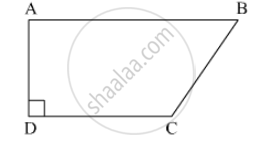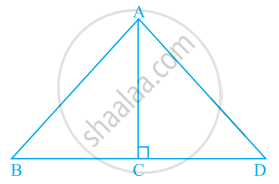Advertisements
Advertisements
प्रश्न
If G(-2, 1) is the centroid of a ΔABC and two of its vertices are A(1, -6) and B(-5, 2) , find the third vertex of the triangle.
उत्तर
Two vertices of ΔABC are A(1, -6) and B(-5, 2) Let the third vertex be C(a, b). Then the coordinates of its centroid are
`c ((1-5+a)/3,(-6+2+b)/3)`
`c((-4+a)/3,(-4+b)/3)`
But it is given that G (-2.1) is the centroid. Therefore,
`-2 = (-4+a)/3, 1=(-4+b)/3`
⇒ -6=-4+a,3=-4+b
⇒ -6+4= a, 3+4=b
⇒ a =-2, b=7
Therefore, the third vertex of ΔABC is C (-2,7 ).
APPEARS IN
संबंधित प्रश्न
If `a≠ b ≠ c`, prove that the points (a, a2), (b, b2), (c, c2) can never be collinear.
Prove that the points A(2, 4), b(2, 6) and (2 +`sqrt(3)` ,5) are the vertices of an equilateral triangle
Find the area of ΔABC whose vertices are:
A( 3,8) , B(-4,2) and C( 5, -1)
Find a relation between x and y, if the points A(x, y), B(-5, 7) and C(-4, 5) are collinear.
In ☐ABCD, l(AB) = 13 cm, l(DC) = 9 cm, l(AD) = 8 cm, find the area of ☐ABCD.

Show that the points (a + 5, a – 4), (a – 2, a + 3) and (a, a) do not lie on a straight line for any value of a.
If the points A(1, 2), O(0, 0) and C(a, b) are collinear, then ______.
In the given figure, if PR = 12 cm, QR = 6 cm and PL = 8 cm, then QM is ______.

In the given figure, ratio of the area of triangle ABC to the area of triangle ACD is the same as the ratio of base BC of triangle ABC to the base CD of ΔACD.

Find the missing value:
| Base | Height | Area of Triangle |
| 22 cm | ______ | 170.5 cm2 |
